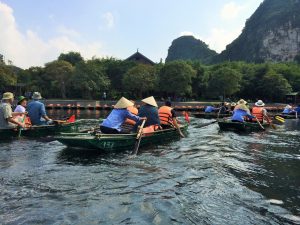Riverine carbon fluxes (discharge to the sea) and emission (outgassing or evasion) are an important part of carbon exchanges between terrestrial, oceanic and atmospheric environment. In Asian regions, river water discharge and sediment loads have been altered dramatically over the past decades as a result of reservoir impoundment, land use, population, and climate changes. Solid sediment loads not only directly contribute organic carbon but also affect chemical weathering and biological processes, thereby change carbon consumption and possible emission.
The Red River (Viet Nam and China) forming the Red River Delta is a good example of a South-East Asian river system strongly affected by climate and human activities. This project applied the Seneque/Riverstrahler model to relate the carbon transfer at the scale of the whole drainage network to the constraints resulting from human activities and natural conditions in the Red River watershed.
The research observed clear long-term variation on hydrology, population, land use, agricultural activities, urbanization for the whole Red River basin since 1960. The model simulations, which generally follow the observed trends, showed the impact of the high population in the watershed on organic carbon inputs in surface runoff from the different land use classes and from urban point sources. A budget of the main fluxes of organic carbon in the whole river network was established using the model results.
The research confirmed the importance of conducting long-term in situ measurements in the Red River provide some ground-truthing data for these calculations. The study identifies the Trang An Scenic Landscape Complex (Ninh Binh province, Viet Nam) as a good place to understand the environment and climate of the Red River Delta region. This is a target which might be interesting for new scientific project development for the protection of environment and ecosystem in this system.
About This Project
This project was funded by APN grants ARCP2013-06CMY-Quynh, ARCP2012-11NMY-Quynh and ARCP2014-03CMY-Quynh. For more information about the project, including its outputs, please visit https://www.apn-gcr.org/resources/items/show/1750.

